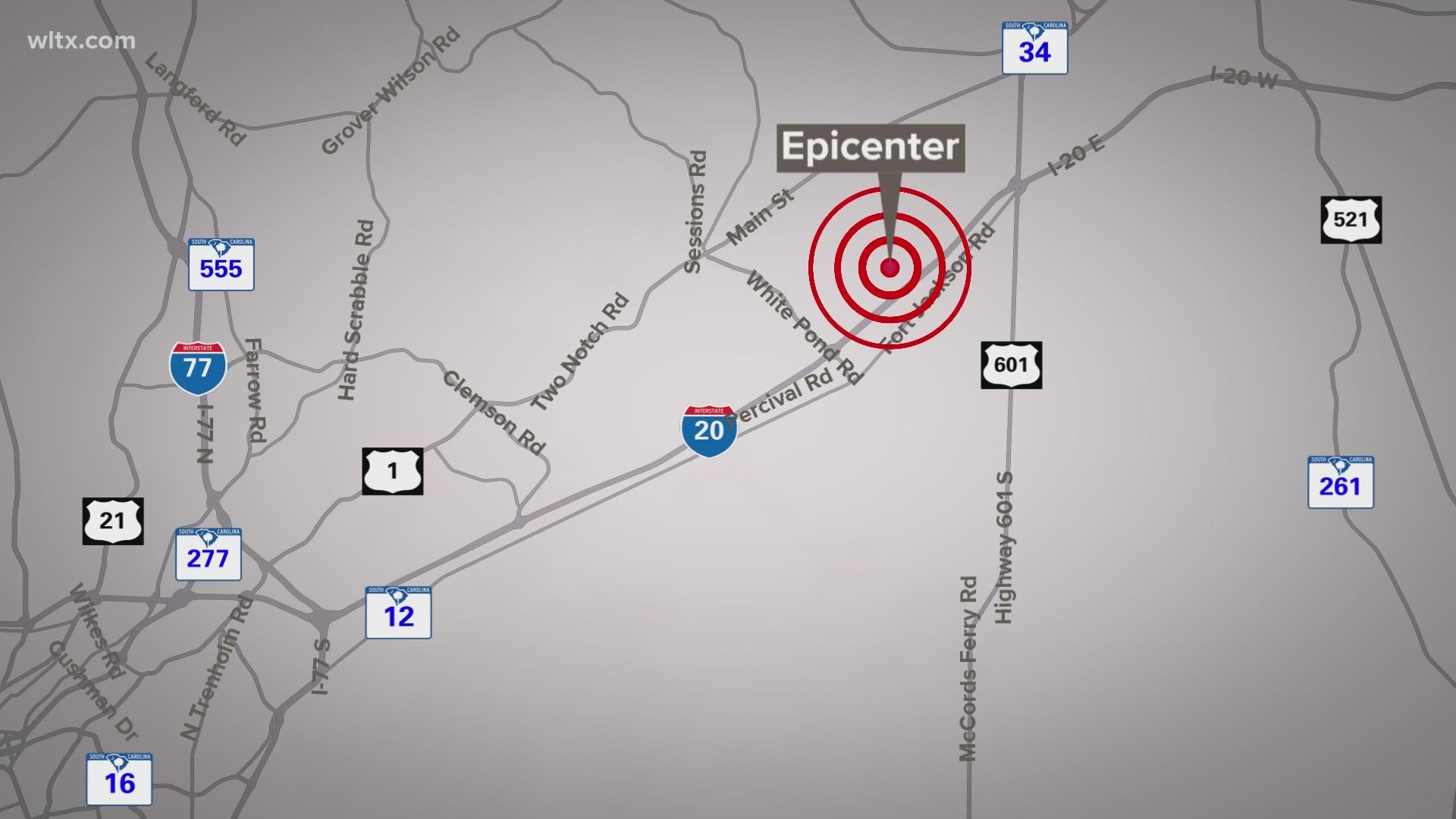COLUMBIA, S.C. — Another day, another earthquake that people all across central South Carolina felt. However, this one was the strongest tremor in the state in over eight years.
The U.S. Geological Survey says the 3.5 magnitude earthquake struck at 2:43 p.m. Wednesday in an area 3.2 miles east of Elgin. The USGS shake map has gotten almost 3,000 reports of people feeling it, with reports all across Richland, Kershaw, and Lexington Counties and has far north as Charlotte.
That record did last long! A 3.6 quake was felt hours later. Read more:
It was originally reported as a 3.3 quake but the USGS revised that up about 50 minutes after the quake happened. That's typical that a magnitude gets revised as better data comes in.
It was at a depth of just over one mile below the surface. Because it was so shallow, that likely contributed to it being felt over a broader area.
Several aftershocks followed. The largest happened just 14 minutes after the first one, occurring at 2:57 p.m.. The 2.06 magnitude quake was 3.8 miles east of Elgin at a depth of 1.36 miles. At that strength, it's unlikely people felt that one unless they were near the epicenter.
Another aftershock took place at 4:02 p.m. but was even smaller at a magnitude of just 1.88. A even smaller one (1.5 magnitude) struck at 4:34 p.m.
Wednesday's quake is the strongest in South Carolina since a 4.1 tremor struck near McCormick County in February of 2014.
This latest activity comes after a 3.4 earthquake struck in the Elgin area at 1:31 a.m. Sunday. Since December of last year, over three dozen quakes have been centered within the Elgin area.
Despite so many quakes happening in that time period, experts say this is something that can happen naturally. Scott White, a geology professor at the University of South Carolina, says they are continuing to research the earthquakes in an attempt to understand why this is happening and if it will continue.
"We don't view this whole sequence as an event with aftershocks, but rather a whole sequence of little earthquakes that are progressively relieving the stress within the earth's crust," White said. "Over this period of time, when enough stress gets relieved, we will see the end of this series of events. The ongoing seismic sequence doesn't reflect abnormal seismic behavior. This one's a bit longer than most, but it could continue for several more months or maybe even a year."

